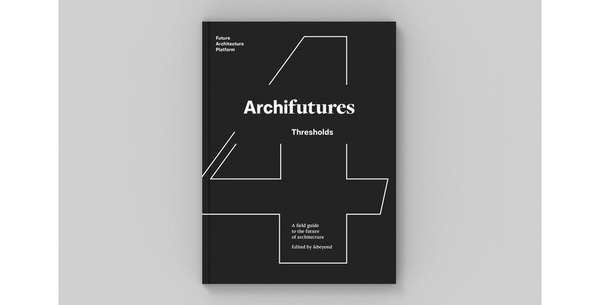Idea by
Marta Fernández Cortés
Call for ideas 2017
Roots in Exile
Roots in Exile
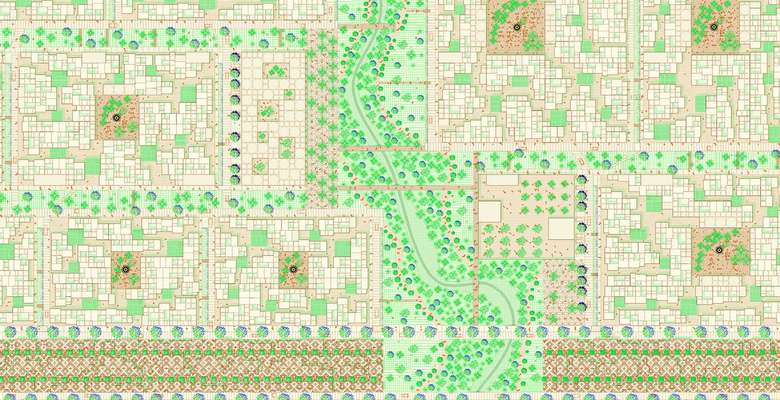
Following the outbreak of Syrian war in 2011, millions of people had to flee their homes and seek refuge elsewhere. ROOTS IN EXILE focuses on Za’atari, one of the many refugee camps that have emerged from this critical humanitarian crisis, and the second largest in the world.
Large investments were needed to finance emergency structures (housing, water, electricity...) which by their temporary nature soon became obsolete and inefficient, coexisting with the life force of refugees that soon transformed the camp in a nascent city.
This project seeks to find the minimum infrastructure needed to generate a more flexible, resilient and sustainable settlement. Water sanitation and reutilization are solved within streets fractal hierarchy allowing to “minimize the energy consumption of transport” (Wagensberg).
This minimum urbanization lays the foundation for a self-constructed settlement, where its inhabitants are empowered by being the active designers of their living environment.
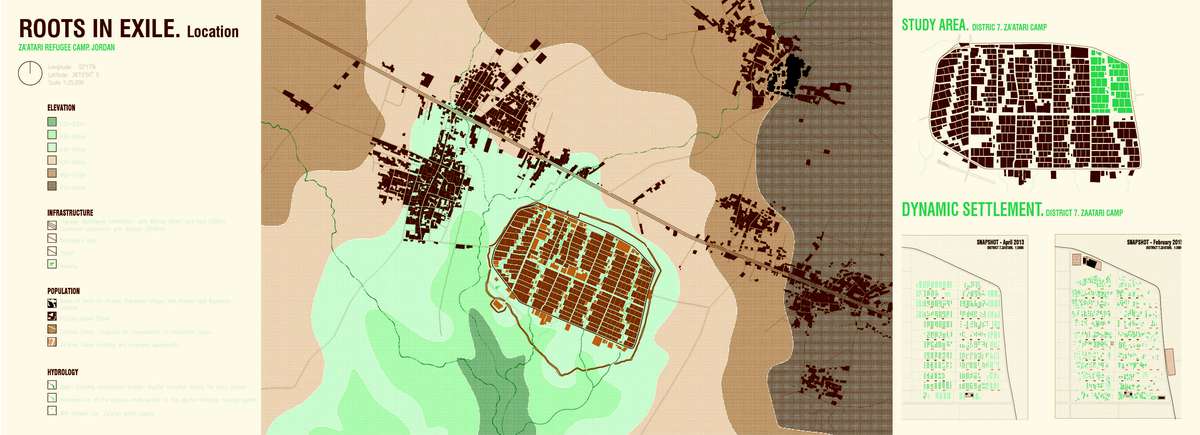
Zaatari Refugee Camp was opened in July 2012 in a former military compound in the middle of the desert. Its urban shape rapidly evolved due to the demographic change and the mobility of the caravans, becoming a very dynamic settlement. The urban proposal seeks to rethink its urban organization though linking water-treated avenues to the existing “wadis”, desert intermittent rivers.
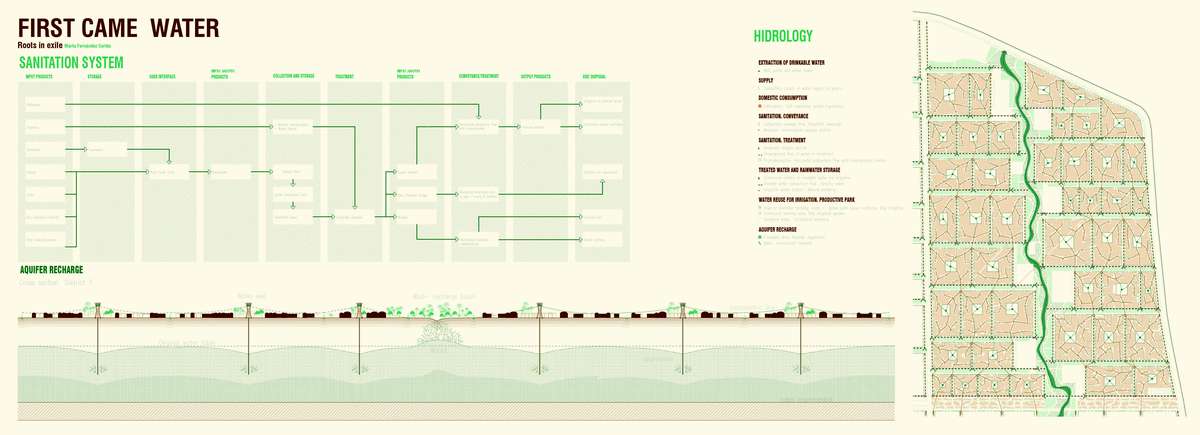
This project seeks to provide new urban alternatives that improve the existing infrastructural deficit and at the same time increase the resilience of an almost city in constant transformation. Being the project placed in Jordan, one of the driers countries of the world, WATER took a primary role on the proposal.
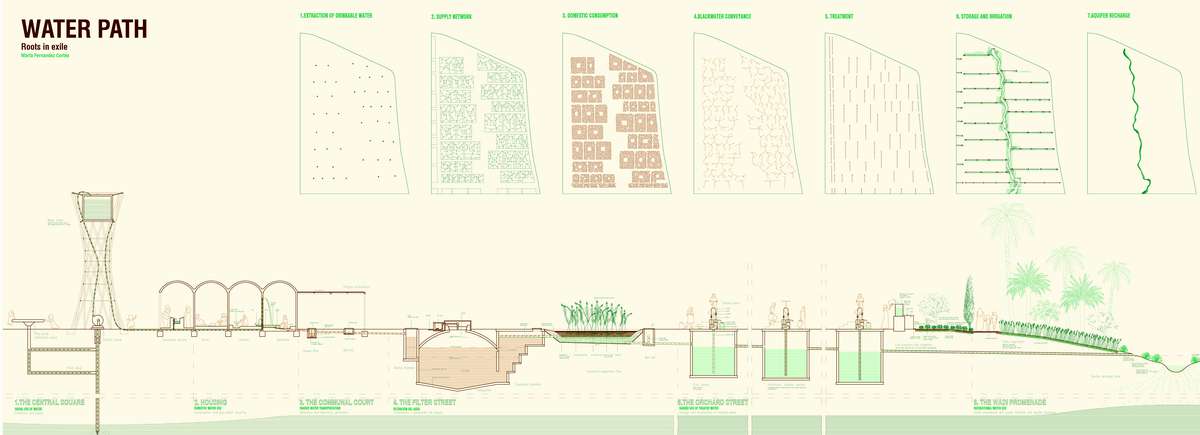
The research is focused on finding the minimum infrastructure needed to generate a more flexible and sustainable settlement. For instance, water sanitation and reutilization are resolved within the streets hierarchy whose fractal geometry allows to “minimize the energy consumption of transport” (Wagensberg) causing greater efficiency of the urban system.
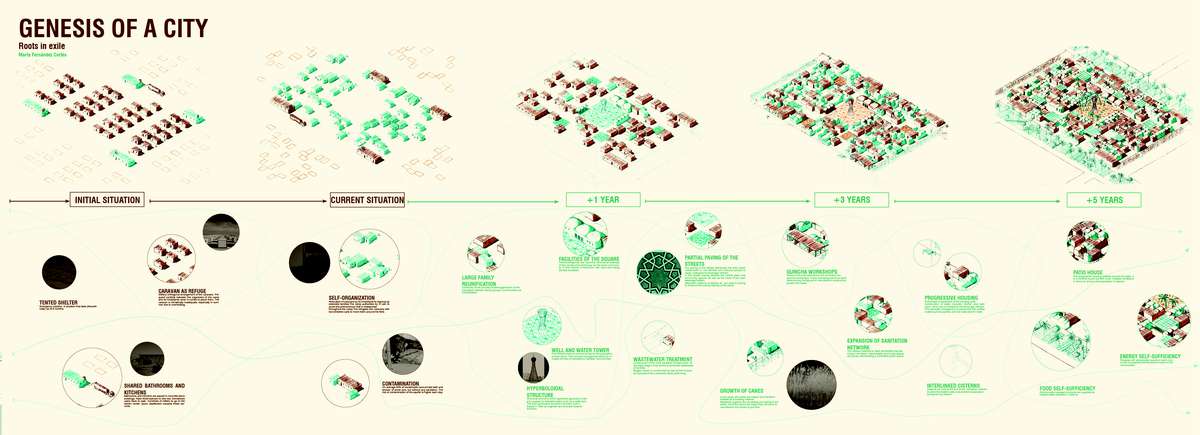
This minimum urbanization lays the foundation for an informal settlement, where its inhabitants have the capacity of changing their living environment and the responsibility of its transformation.
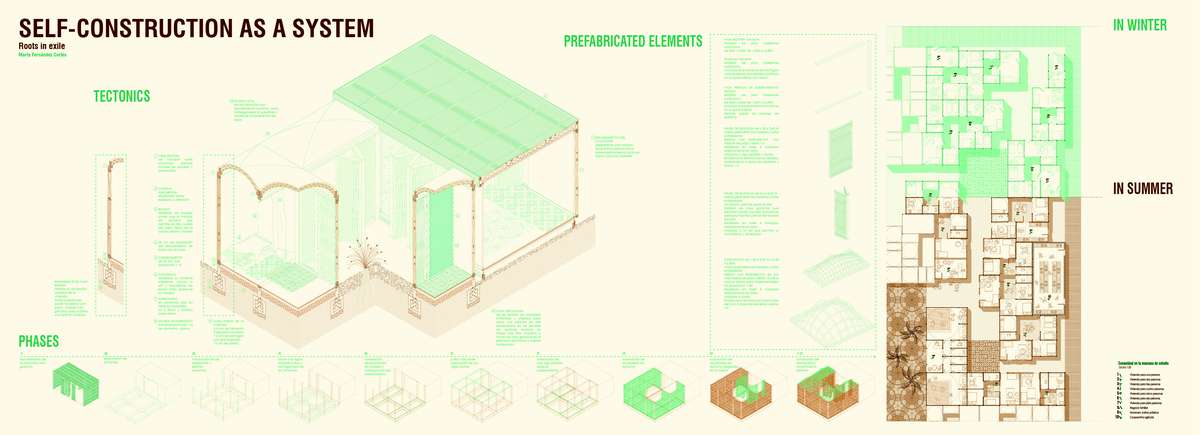
The self-construction is fostered as a creative process of empowerment of place. The multiplicity of solutions are an alternative to the typical standardization and the extreme monotony of emergency planned settlements.
Roots in Exile
Roots in Exile

Following the outbreak of Syrian war in 2011, millions of people had to flee their homes and seek refuge elsewhere. ROOTS IN EXILE focuses on Za’atari, one of the many refugee camps that have emerged from this critical humanitarian crisis, and the second largest in the world.
Large investments were needed to finance emergency structures (housing, water, electricity...) which by their temporary nature soon became obsolete and inefficient, coexisting with the life force of refugees that soon transformed the camp in a nascent city.
This project seeks to find the minimum infrastructure needed to generate a more flexible, resilient and sustainable settlement. Water sanitation and reutilization are solved within streets fractal hierarchy allowing to “minimize the energy consumption of transport” (Wagensberg).
This minimum urbanization lays the foundation for a self-constructed settlement, where its inhabitants are empowered by being the active designers of their living environment.
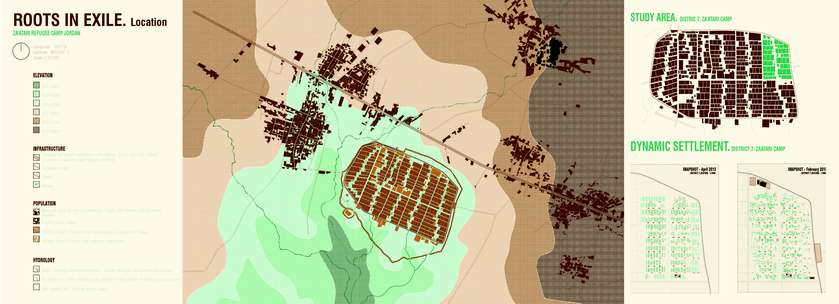
Zaatari Refugee Camp was opened in July 2012 in a former military compound in the middle of the desert. Its urban shape rapidly evolved due to the demographic change and the mobility of the caravans, becoming a very dynamic settlement. The urban proposal seeks to rethink its urban organization though linking water-treated avenues to the existing “wadis”, desert intermittent rivers.
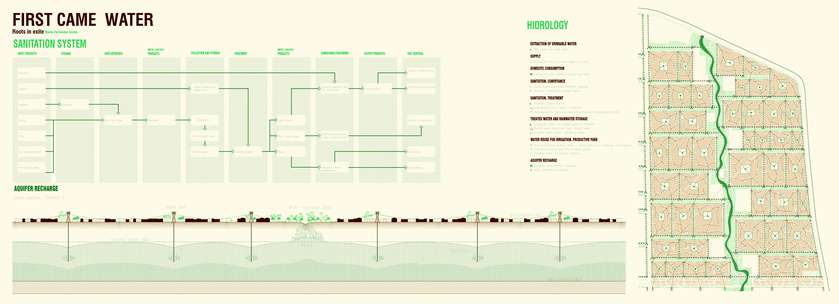
This project seeks to provide new urban alternatives that improve the existing infrastructural deficit and at the same time increase the resilience of an almost city in constant transformation. Being the project placed in Jordan, one of the driers countries of the world, WATER took a primary role on the proposal.
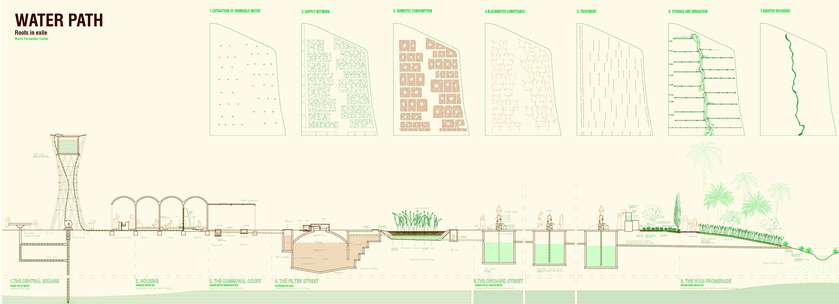
The research is focused on finding the minimum infrastructure needed to generate a more flexible and sustainable settlement. For instance, water sanitation and reutilization are resolved within the streets hierarchy whose fractal geometry allows to “minimize the energy consumption of transport” (Wagensberg) causing greater efficiency of the urban system.
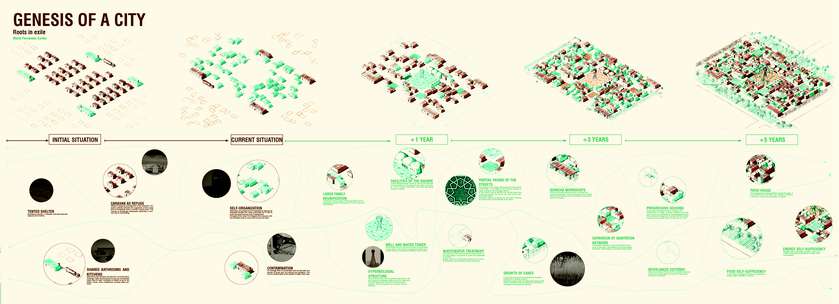
This minimum urbanization lays the foundation for an informal settlement, where its inhabitants have the capacity of changing their living environment and the responsibility of its transformation.
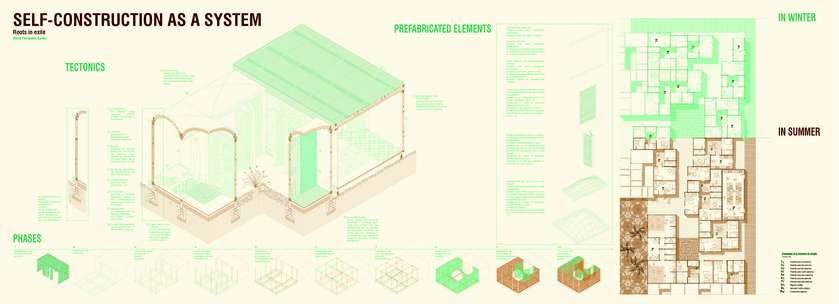
The self-construction is fostered as a creative process of empowerment of place. The multiplicity of solutions are an alternative to the typical standardization and the extreme monotony of emergency planned settlements.
